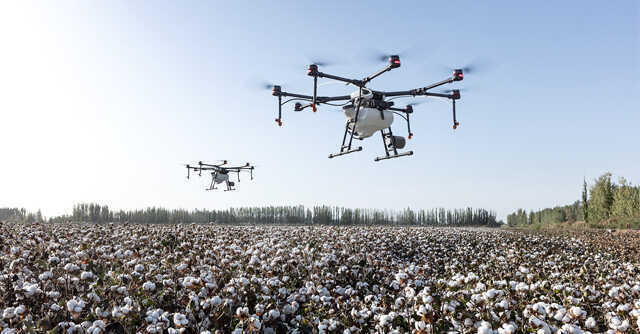
Blanket ban on drone import may disrupt supply, increase costs for drone firms


The blanket ban on the import of finished drones in India announced by the government on Thursday is expected to disrupt the drone industry in India, increase their cost burden, and impact service providers, many of whom depend heavily on imported drones for aerial mapping, industrial monitoring, and cinematography.
The government’s decision will lead to “a lot of disruption” in terms of business and “derail a lot of well-laid plans” as 90% of service providers in India are using imported drones right now, Mughilan Thiru Ramasamy, chief executive and co-founder of drone software services firm Skylark Drones, pointed out.
Ramasamy believes the government should have offered some incentives to the industry to override the ban, as India doesn’t have the manufacturing capacity right now to cut dependence on imports.

Karan Kamdar, chief executive of 1 Martian Way Industries, concurred that the ban will have an immediate impact in India. His company develops software and embedded artificial intelligence (AI) products that power drones.
According to Kamdar, many people are now accustomed to imported drones and the ease of use they bring. The company has developed software that can interact with application programming interfaces (APIs) for imported drones, from companies like DJI and others.
He added that many of these foreign brands had drones that are specially made for agriculture that would have helped with the government’s kisan drone initiatives, announced during the Union Budget on February 1. These too will now be restricted. “It is not as simple as banning an app. This sector is hardware dependent,” he said.

In addition to the ban on import of finished drones, semi-knocked down (SKD) and completely knocked down (CKD) drone imports have also been prohibited by the government. The government has also stopped SKD and CKD units from being imported. Components have to be sourced separately by drone firms now from their respective suppliers.
Though India has announced a production-linked Incentive (PLI) scheme worth Rs 120 crore for drones and drone components to encourage local manufacturing, experts pointed out that unlike sectors like smartphones or IT hardware, drone assembly in India is in very early stages.
Ramasamy said India doesn't have the supply chain for local manufacturing of drones. “We don't have locally produced batteries or locally produced motors, or the capability to produce auto pilot electronics at scale,” he said.

Further, the move will also increase the cost burden on companies as imported drones are cheaper than locally-assembled ones--a problem that phone firms faced in the initial stages of the make in India initiative.
A high-end drone used for industrial purposes can cost close to Rs.1 lakh, while locally manufactured drones can cost Rs.4-6 lakh, Ramasamy pointed out, adding, “For the drone ecosystem to flourish and for innovative new use cases to emerge, access to high-quality and economically priced drone hardware is critical.”
Despite the immediate concerns, both Kamdar and Ramasamy believe the ban will play a critical role in bringing drone manufacturing to India.

Smit Shah, president of the Drone Federation of India, said that whether its commercial operations, surveying, agriculture spraying, healthcare delivery, or using drones for defence purposes, Indian companies have already supplied multiple drones that were assembled in India.
“If you are assembling a drone with 20 components and you import 15 components and assemble it in India, your indigenization content is very low. But the very fact that you are importing this component from 15 vendors and integrating them gives you control and understanding of the technology. Later, if you want to indigenize five of them, you will have the know-how to do it,” Shah added.
